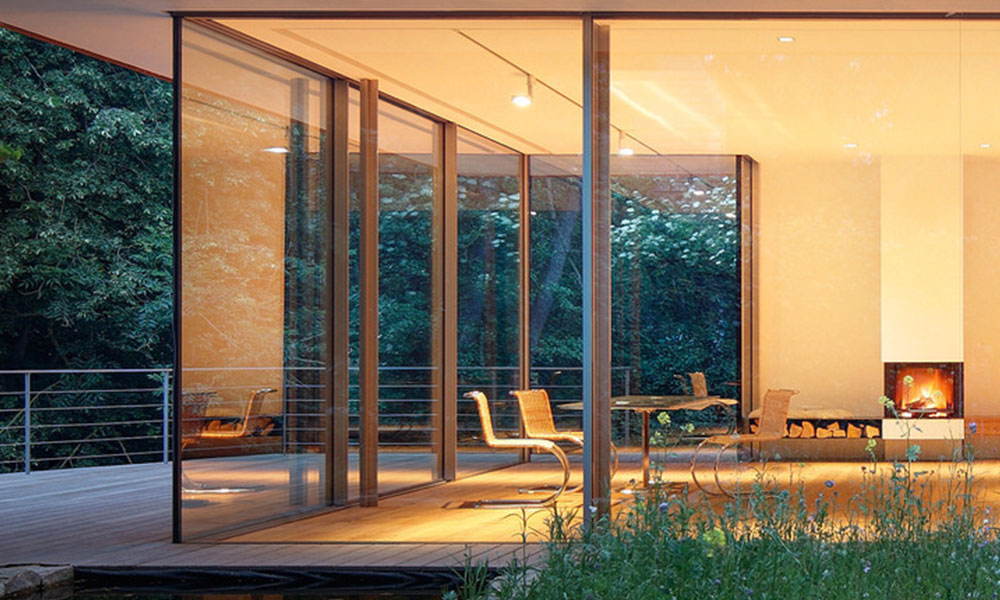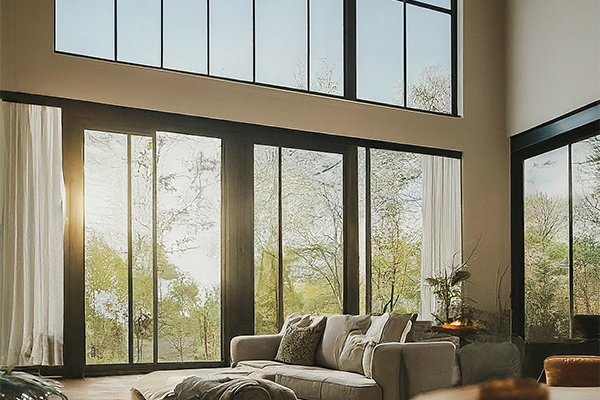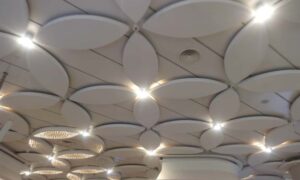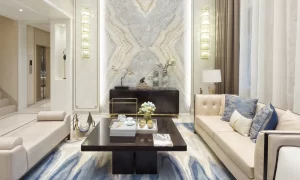The Art of Reflection – Transforming Spaces with Light, Glass, and Shine

Reflections are an often-overlooked yet powerful tool in design. While mirrors are the most obvious way to incorporate reflections, they are just the tip of the iceberg. Reflections can add depth, movement, and light to a space, creating an atmosphere that feels more expansive and dynamic. By understanding how to use reflective elements beyond mirrors, designers can craft spaces that captivate the senses and elevate aesthetics.
Reflections are more than just a visual effect; they are a fundamental aspect of how we perceive space. When used correctly, reflections can create the illusion of openness, guide the eye toward key design elements, and enhance natural and artificial lighting. Unlike traditional mirrors, which provide a direct and often static reflection, other reflective surfaces introduce layers of complexity and intrigue.
How Reflections Can Transform Any Room
Incorporating reflections in design isn’t just about making a space look good—it’s about shaping the way it feels and functions. Strategic use of reflections can turn dark corners into luminous focal points, make small rooms feel expansive, and even highlight architectural details that might otherwise go unnoticed. Designers often use reflective surfaces in unexpected places, such as ceilings, backsplashes, and flooring, to create a sense of height, depth, and overall visual interest.
Natural Reflections: Harnessing Light and Shadows
One of the most effective ways to use reflections is by maximizing natural light. Reflective materials like glossy flooring, polished furniture, and metallic finishes can bounce sunlight deeper into a space, reducing the need for artificial lighting and creating a warm, inviting atmosphere. Even strategically placed artwork with reflective qualities can enhance the movement of light within a room, contributing to a more dynamic and inviting space.
Water is a natural reflector that can add tranquility and elegance to any space. A still pond, an indoor water feature, or even a strategically placed glass of water can create mesmerizing reflections that enhance the overall ambiance. Water reflections introduce a fluid, organic element to the design, creating a soothing and immersive experience. The effect of rippling water can also add motion and a sense of life to an otherwise static environment.

Reflections aren’t just about bouncing light—they also interact with shadows to create depth and contrast. By placing reflective surfaces near windows or light sources, designers can play with shadow patterns, adding a layer of artistry to the environment.
Reflective Materials Beyond Glass
- Metallic Finishes. Metals like brass, copper, and stainless steel offer a sophisticated way to introduce reflections. Whether through brushed surfaces for a subtle sheen or polished finishes for a striking effect, metallic elements add warmth and modernity to a space.
- High-Gloss Surfaces. High-gloss paints, lacquered furniture, and ceramic tiles can act as reflective surfaces that subtly enhance lighting. These surfaces are particularly useful in spaces that lack direct sunlight, as they help distribute artificial light more effectively.
- Mirrored Tiles and Panels. For those who want the benefits of mirrors without the traditional look, mirrored tiles and panels offer a contemporary alternative. These elements can be used in backsplashes, ceilings, and even flooring to create unexpected reflective moments.
- Polished Stone and Marble. Natural stone surfaces such as marble and granite bring an organic, luxurious touch to reflective design. Their polished surfaces subtly bounce light, adding depth and sophistication to interiors.
Strategic Placement of Reflective Elements
Placement is key when working with reflections. Positioning reflective elements opposite light sources, artwork, or statement pieces can create intentional visual highlights that draw the eye.
Small rooms benefit immensely from reflections, as they create an illusion of depth. Using reflective finishes on walls, ceilings, or furniture can trick the eye into perceiving a more open space. A well-placed reflective surface can visually double the size of a room, making it feel more spacious and airy.
Directing Attention with Reflective Focal Points
Reflections can be used to frame and enhance focal points in a room. A well-placed reflective surface can direct attention to a specific area, guiding the viewer’s gaze and reinforcing the design’s narrative. Incorporating reflections into a statement piece, such as a metallic sculpture or a polished accent wall, can enhance its impact.
Reflections in Nature-Inspired Design
- Organic reflective surfaces. Natural reflective surfaces, such as polished wood or water elements, contribute to a sense of calm and balance. These materials can be integrated into biophilic designs to bring the serenity of nature indoors.
- Water and greenery enhance. The interplay between water and greenery creates dynamic reflections that shift with the light and movement of the day. Placing plants near reflective surfaces can amplify their presence and create a lush, vibrant aesthetic.
Biophilic Design: Bringing the Outdoors Inside with Reflection
By incorporating natural reflective elements, designers can foster a connection with the outdoors. This approach not only enhances visual appeal but also promotes well-being and
The color of reflective surfaces affects how light interacts with them. Lighter hues create a soft, diffused glow, while darker tones produce sharp, dramatic reflections. Matte surfaces provide subtle, diffused reflections that add depth without overwhelming a space. Glossy finishes, on the other hand, create bold and striking reflections that enhance brightness and energy. Combining different reflective textures—such as glass, metal, and stone—can create a dynamic interplay of light and shadow, adding depth and complexity to an interior.
Conclusion
Reflections add depth, light, and intrigue to spaces when used with intention. Understanding their power allows designers to craft visually captivating and emotionally engaging environments. The key to using reflections successfully is balance. Mixing reflective and matte surfaces, choosing the right materials, and strategically placing reflective elements ensure a harmonious and impactful design.







